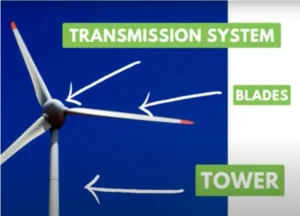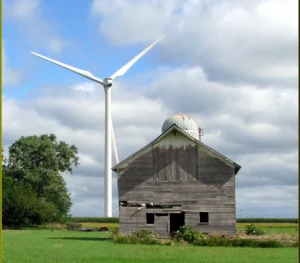Wind Energy: A Breath of Fresh Air for a Greener Future
In this article we will explore the world of wind power and dive into the technology that is transforming the global energy landscape. We will learn how modern wind turbines work and how they are helping to combat climate change.

Wind generators consist of three basic components: the tower, the blades, and the power transmission system. Let’s start with the tower, a pillar of strength that raises the wind turbine and allows the blades to capture the wind at optimal heights. The height variation of the towers is designed according to the terrain and surrounding environmental conditions.
How wind energy works
The aerodynamically designed blades play a crucial role. Their shape facilitates the capture of wind kinetic energy, which sets in motion their rotation. This rotary motion is connected to a sophisticated power transmission system, in which the blades drive a drive shaft connected to an electric generator. In this process, mechanical energy is transformed into ready-to-use electrical energy.
An advanced control system constantly monitors wind direction and speed. When the speed exceeds a predetermined threshold, the control system adjusts the angle of the blades to optimize energy efficiency and protect the generator from excessive stress. You can read more about wind turbine efficiency in this article.
How wind energy reaches our homes
The path of electricity generated by wind generators to our homes and communities is somehow fascinating. The energy is transferred through an electrical grid, consisting of transmission lines and substations, where it is then adapted to meet the needs of people, businesses and industries.
Today, wind turbines can be found both on land and at sea. Those at sea provide the ability to harness the constant wind of the oceans. These massive structures, along with land-based wind generators, contribute significantly to global renewable energy production.
Issues related to wind energy
The fight against climate change finds these generators an essential ally, offering a greener and more sustainable future. However, we cannot overlook some major challenges. The production of wind generators requires significant amounts of steel and concrete to ensure their stability. But like many things, if used for a useful purpose, they can offset the environmental costs.
Some people have opposed the construction of wind turbines near their homes, citing the possible alteration of the landscape, the risk of driving away birds, and noise. This is a valid point, but we must also consider the alternative: coal-fired power plants with their polluting emissions.
For those looking for a solution closer to home, there are compact home wind generator kits that install on rooftops and produce substantial amounts of power. A step toward the extremely important energy independence and reduced consumption.
With this brief introduction to wind power we conclude our article. Don’t forget to subscribe to our YouTube channel to find out more about renewable energy and a sustainable lifestyle.


One thought on “Wind Energy: A Breath of Fresh Air for a Greener Future”
Comments are closed.